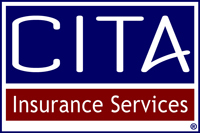-
Key Feature in an E&O Insurance Policy for Life Insurance Agents
Key Feature in an E&O Insurance Policy for Life Insurance Agents
10.01.2016In issuing life insurance to your clients, there is always a risk that a client could potentially file an errors and omissions (E&O) claim against you. In such a case, it is important that you are protected for the sake of your finances and those of your business. One of the most important features that your E&O policy should have is insolvency of carrier coverage.
What Is Insolvency of Carrier Coverage?
Insolvency of carrier coverage protects you in the event that your client’s insurance company is unable to pay their claim due to bankruptcy. As you were the one who put your client into a policy with that company, you could be held liable to pay the claim that they were unable to cover. Your client may file the claim against you for not realizing the very real possibility of the insurance company going bankrupt.
Since your duty is first and foremost to your client, you should always be doing your best to put them into business with the best and most reliable insurance companies available, particularly when it comes to life insurance. This is an area that greatly affects your client’s and their beneficiary’s lives, so it is crucial that you take great care in choosing which insurance companies to work with.
Why Is Insolvency of Carrier Coverage Important?
This can best be explained through an example. Let’s say that your client had a life insurance policy worth $10 million to be paid to his wife and three children in the event of his untimely death. That client is then killed in a car accident on his way home from work one day. His wife is a stay-at-home mom with no income of her own to raise their three children, relying solely on her husband’s income. Then, when she files the life insurance claim, she finds out that the issuing insurance company has filed for bankruptcy and will not be able to furnish that $10 million.
The burden then shifts to you as the issuing agent. If you did not have insolvency of carrier coverage, you could be held responsible for paying that $10 million to your client’s wife. However, your business only brings in revenues of about $2 million per year. This $10 million claim would bankrupt your insurance agency and likely yourself as well. If, on the other hand, your professional liability insurance policy did include insolvency coverage, your insurance company would have the responsibility for paying the claim, keeping your and your business’ assets protected.
How Can You Protect Yourself from These Types of Claims?
In addition to obtaining adequate insolvency coverage, the best way to prevent these types of claims is to thoroughly vet the insurance companies you choose to work with. Examine their past history with paying claims and evaluate their financial data. Watch out for any red flags that could indicate trouble within the business, like claim payouts exceeding revenues or a slowing down of the financial growth of the insurance company. Check their A.M. Best ratings as well.
Many insolvency coverage policies have ratings thresholds that insurance companies must meet in order to be covered by the policy. Keep an eye out for any changes to their ratings, as this could affect your ability to use your policy in the future. If you notice a company’s rating start to slip over time, it would be advisable to switch your clients to a policy with a company that offers more financial stability. Above all, document everything to prove that you have done your due diligence in the event that a claim is filed against you.
All information provided in this blog is for informational purposes only. The sources used are presumed accurate. CITA Insurance Services, Brown & Brown Program Insurance Services, Inc. and Brown & Brown, Inc. will not be liable for any errors, omissions, losses, injuries or damages arising from its display or use and will not assume responsibility for any misguided information. No guarantees are implied.
